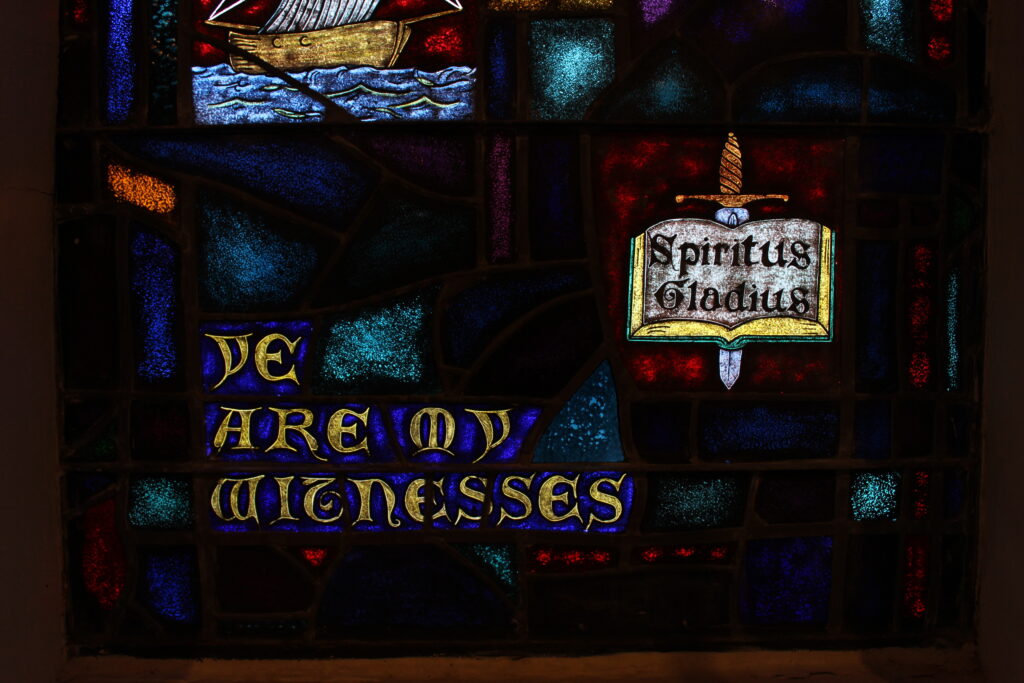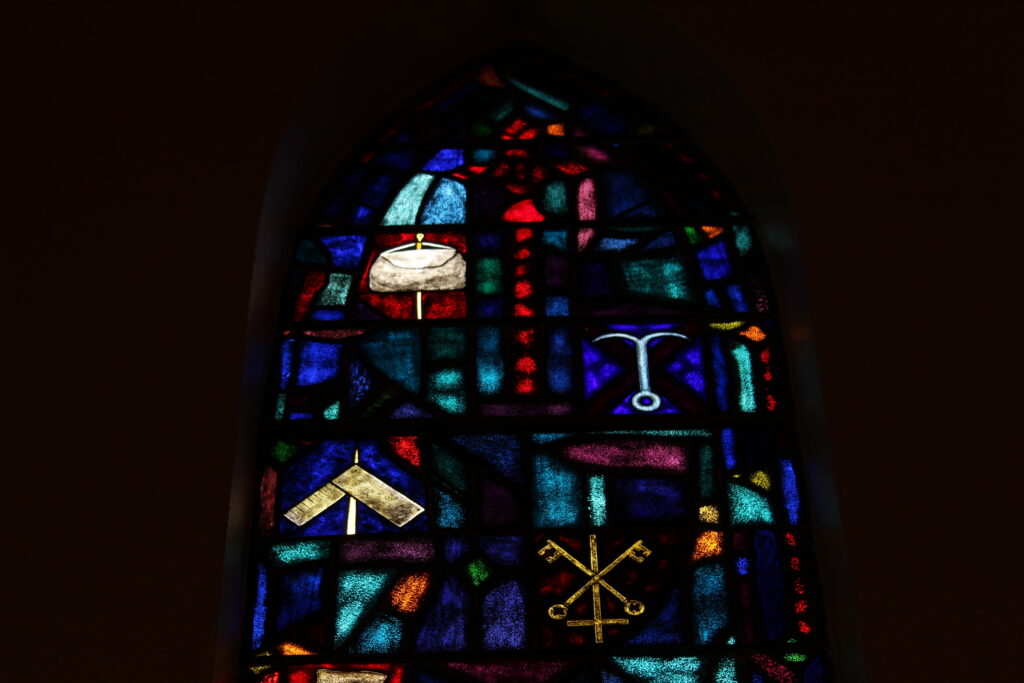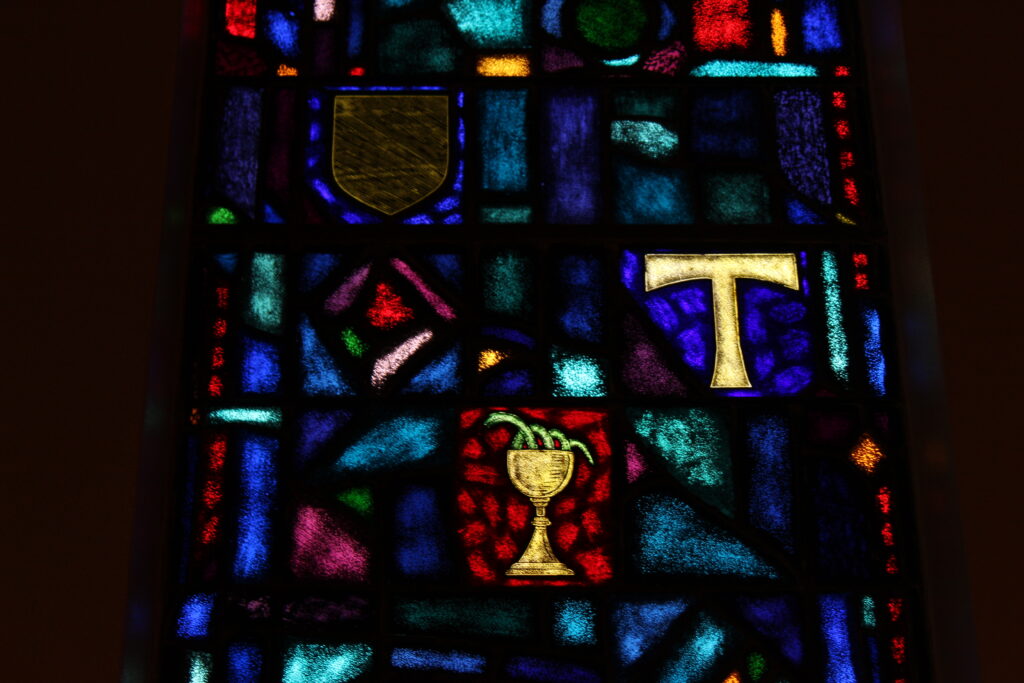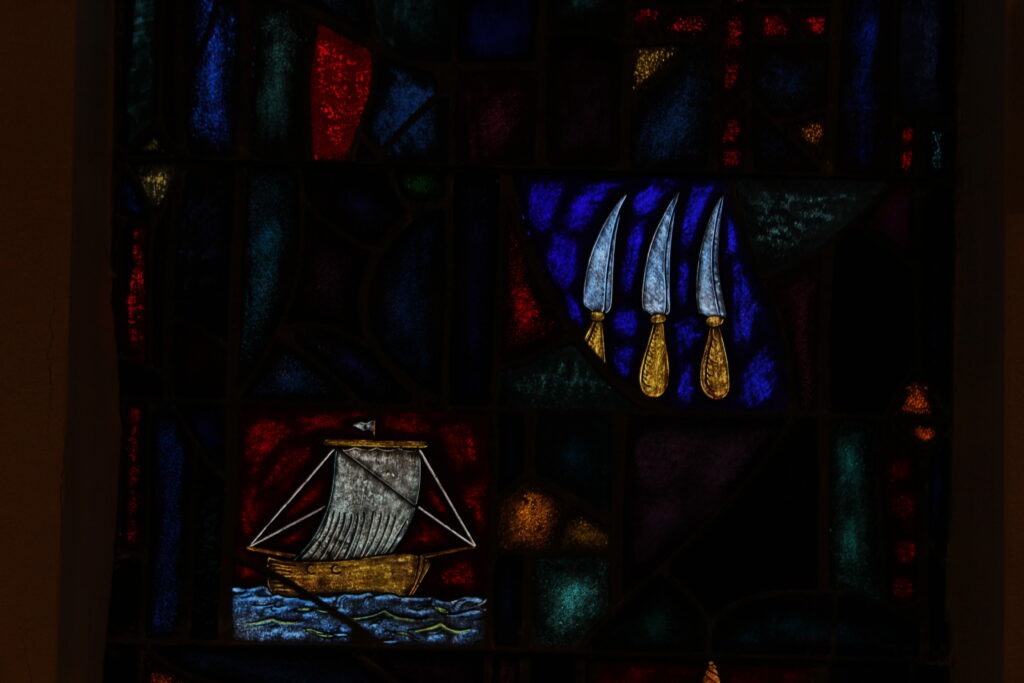Windows On Our World
December 2023 | Written by Maribeth Griessel
Last January a new series of articles began in The Porch, entitled “Windows On Our World.” It opened, “A new year, a new title, a new series of articles.” Hopefully you, as readers, have enjoyed our journey through the history of the forebears of Gashland EPC, from 1820 when a young pioneer named Joseph Gash moved to Clay County, MO, from Asheville, NC, purchasing 160 acres of land that would, over 150 years later, become the Metro North Mall. Ultimately the Gash family would become pillars of the old Barry Cumberland Presbyterian Church. It is doubtful Joseph Gash could have imagined this 19th century little house of worship would two hundred years later evolve into our modern day Gashland Evangelical Presbyterian Church.
This series of articles served two purposes. First, literally, we presented monthly features on Gashland’s stained glass windows, with pictures, descriptions and meanings of each. Secondly, the “windows” were thumbnail sketches of the history of our present-day church. The January initial article appropriately focused on the “Rose Window,” located in the front north wall of the sanctuary, proclaiming Jesus as our Alpha and Omega, the Beginning and the End, the First and the Last.
What better culmination of “Windows On Our World” than to finish with the opposite end of the sanctuary, highlighting the tall, slender stained glass in the south wall, “The Witness Window.” Some report this beautiful tribute to the twelve disciples and St. Paul was designed by Rev. Paul Votaw (see the June and July issues of The Porch), while others simply acknowledge that this long- time pastor of Gashland was indeed instrumental in this window’s creation and installation.
As we proceed to examine the various symbols included, Isaiah 43:10 professes at the left side, on the bottom of this window, “Ye are my witnesses…”. To the right we see the open Bible, the Word of God, with the words “Spiritus Gladius,” the sword of the Spirit, overlaying a sword.
Now, beginning at the top of the Witness Window on the left is a pilgrim’s staff and travel case, depicting the life of travel and witness of James (the Greater), son of Zebedee and brother of John. James would go on to spread the good news of Jesus Christ until he was martyred (see Acts 12:1-2). Slightly below to the right we view the symbol representing Andrew, brother of Peter. The “X” cross and fish hook depict Andrew as a “fisher of men.” The gospel of John provides more information on Andrew than do the other three gospels.
Back to the left is a vertical spear overlaid by a carpenter’s square, portraying Thomas as perhaps a carpenter, a builder of mission churches. Traditionally we remember this man as the “doubter,” John 20:25-29. Moving down to the right are two keys, indicative of the Matthew 16:19 verse in which Jesus told Simon Peter, “I will give you the keys of the kingdom of heaven…” These keys acknowledge the authority Christ gave to Peter as spokesman in the Church, demonstrating Peter’s amazing “comeback” after denying his Lord and Savior, Jesus Christ, three times following His arrest, prior to His crucifixion.
James the Lesser is represented by a handsaw, as this witness was reportedly martyred in his late 90’s by being sawed into pieces when he failed to die after being pushed off the top of the Temple. Continuing down we see a plain, blank, drab-looking shield, nothing interesting or beautiful. Thus would end the life of Judas Iscariot, the treasurer of the twelve apostles, who would end his own “un-beautiful” life following his betrayal of his master, Jesus. Continuing down on the right is a simple T, the Tau cross. Tradition reports that the tax-collector disciple, Matthew, suffered martyrdom on just such a Tau cross while in Ethiopia, collecting not monetary taxes, but souls for the kingdom of his Savior. In the approximate center of the Witness Window is pictured a chalice containing a serpent. It was reported that a priest of the goddess Diana attempted to poison John (the disciple who was also known as Jesus’ favorite), at which time he made the sign of the cross over the chalice and the poison became the escaping serpent.
Next on the right is a stained glass book with a fish on top. What could this odd depiction represent? Simon (the Zealot) was a Roman-hating revolutionary. But this symbol shows his becoming a new person, a fisher of men, with the book demonstrating his new faith and the power of the gospel of Christ. Again looking left, view a cross with stalks of wheat on each side. Philip carried the message of the cross in his missionary journeys in Asia and Phrygia. The stalks of grain may remind us of Jesus being the “bread of life,” as well as Philip’s question in John 6:5 as to where they were to find enough bread to feed the multitudes.
Very little is known, scripturally or historically, about Bartholomew (who may be the same man referred to as Nathanael in the first chapter of John). His symbol down to the right on the window, pictures three knives, and is probably indicative of the method of his martyrdom. Finally we come to the last apostle symbolized. Known by Church Father Jerome as Trinomius, meaning “a man with three names,” Jude was the brother of James. He was the author of the next to last book of the Bible, and was also known as Thaddaeus or Lebbaeus, sometimes also called “Judas” (though of course not to be confused with Judas Iscariot). The ship at full sail indicates his method of travel during his missionary voyages.
As described early in this article, the Spiritus Gladius, the Sword of the Spirit (Ephesians 6:17 and Hebrews 4:12), the Word of God, is the symbol for Paul, the anti-Christian Saul of Tarsus, who was converted by the Lord on the Road to Damascus, going on to become the greatest Christian evangelist of all time.
God created and called all of the men symbolized on this Witness Window to build and spread His Kingdom throughout the world following the earthly life, ministry, death and resurrection of His only Son, Jesus. And as our Heavenly Father has continued to increase His earthly Church, there came a time two hundred years ago when He put in place plans for a local body named Gashland. May we continue to serve and obey until our Lord returns to call us home.






